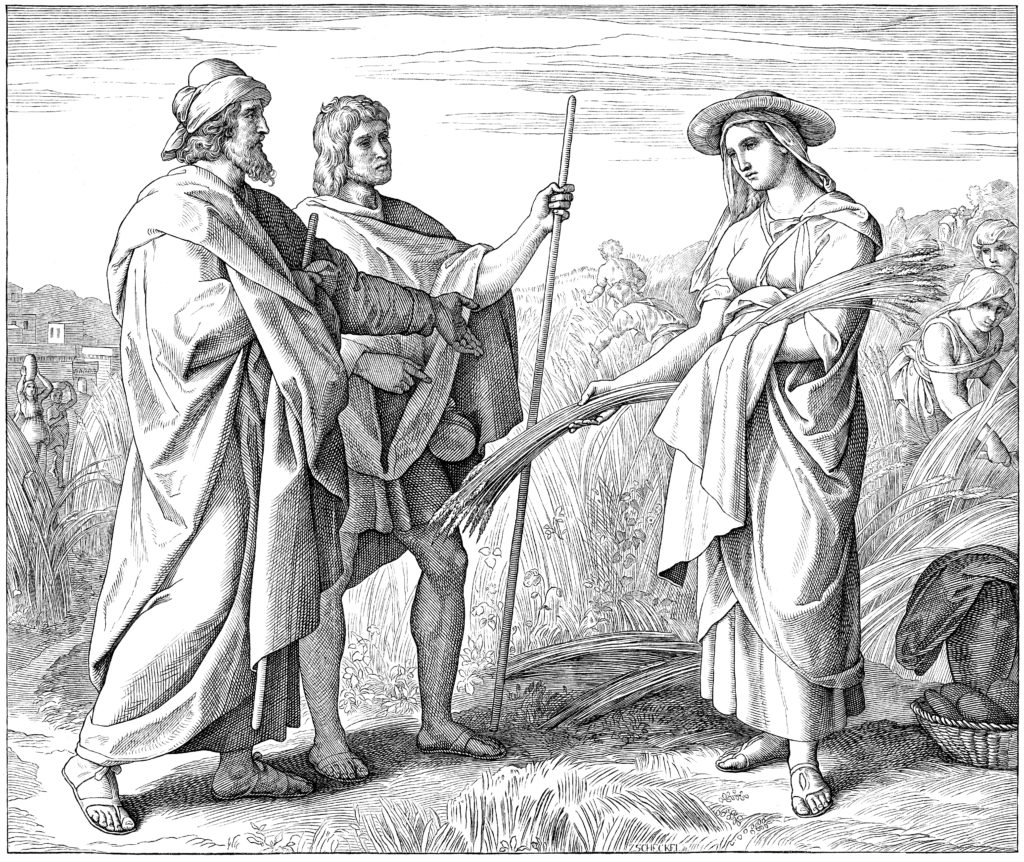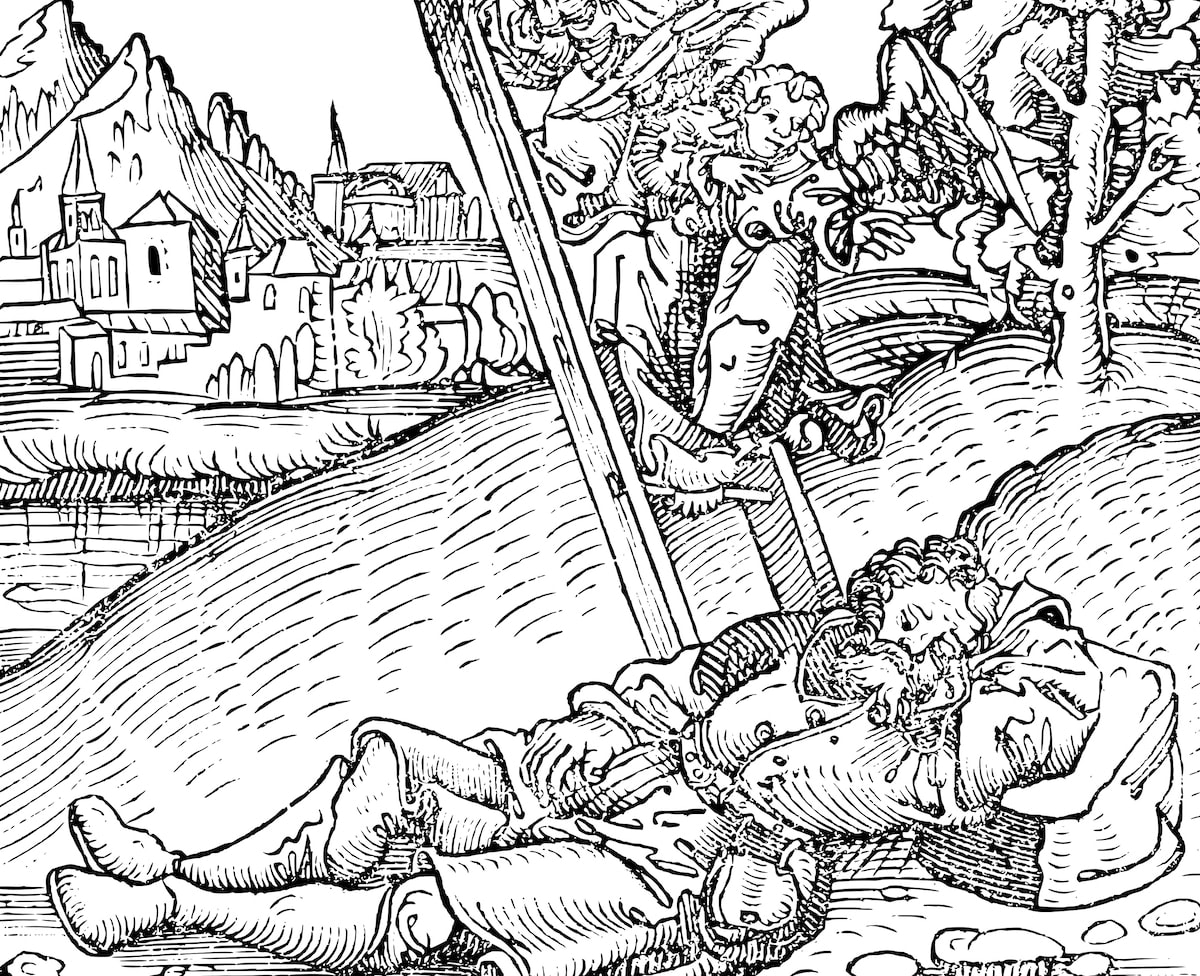

Julius Schnorr von Carolsfeld (1794-1872) was a Lutheran painter and illustrator. He was born in Leipzig and received his first art lessons from his father, who was a painter. Carolsfeld went to the Vienna Academy, spent several years in Rome, moved to Munich, and finally ended up as a professor of the academy in Dresden and the director of an art museum. During his time at the Vienna Academy and in Rome, he associated with the Nazarene movement, which was a reaction against modern artistic styles. The Nazarenes desired to bring back religious painting, as idealized in the works of the Late Middle Ages and Renaissance. They took up residence in an empty monastery in Rome. They lived simply, saw to their daily duties, and worked on their paintings; their life was reminiscent of the guilds of the Middle Ages. The Nazarenes had intended to illustrate the entire Bible, but ended up going their separate ways before it was accomplished. Most of the artists went back to Germany and taught at academies or oversaw art museums. Carolsfeld didn’t forget the project, and he single-handedly completed 240 Bible illustrations over the course of several decades. Though he lived during the Romantic Period, his association with the Nazarenes gave him a Renaissance ideal, and he reacted against the spirit of the age.
In 1828, during his time in Munich, Carolsfeld painted “Ruth in the Field of Boaz.” Later, when working on the illustrations for his Picture Bible (published 1852-1860), Carolsfeld based his illustration for Ruth on his previous painting. Both images depict many parts of Ruth 2 simultaneously: Ruth gleaning (2:3), Boaz’s conversation with the servant who was in charge of the reapers (2:5-7), Boaz’s address to Ruth (2:8-9, 11-12), Ruth’s thankful response (2:10, 13), the water and bread that Boaz offers (2:9, 14), the sack of grain that Ruth brings back to Naomi (2:17-18). Renaissance-era paintings often included a whole event, sometimes to the point of including the same character in the painting multiple times. For example, Jesus appears more than once in Calling of the Apostles by Domenico Ghirlandaio (1481), Scenes from the Passion of Christ by Hans Memling (c. 1471), and The Temptations of Christ by Sandro Botticelli (c. 1480). Modern artworks, perhaps influenced by the camera, often capture a snapshot from a scene rather than the entire event. While he didn’t include characters multiple times in the same illustration, Carolsfeld maintained the skill of capturing a whole event in a single image.
Comparing Carolsfeld’s two works makes for an interesting study in how the artistic medium shapes decisions about content. Notice how Carolsfeld has background foliage, including a large central tree, in the painting. The muted greens do not overpower the focal point of the painting, which is Ruth’s face. In the drawing, however, there is no background foliage. Since the drawing only involves black lines on a white background, the complexity of leaves and branches behind the characters would have drawn the focus away from where Carolsfeld wanted it. So that there wouldn’t be a void in the middle of the drawing after removing the trees, he leaned the servant’s staff forward instead of backward, thus filling the gap between the characters and keeping the illustration balanced. Note also that in the painting Carolsfeld makes the grain texture rather muted and gives the main characters prominence by their colored garments. In the woodcut he takes advantage of the lines in the grain to give it an averaged light gray tone. He then makes the servant contrast the background by shading him more, and Boaz and Ruth contrast the background (and have symmetry with each other) by making their garments lighter. Medium and content are inseparable. That truth applies to art, literature, the architecture of our homes, and the worship of God.
Carolsfeld’s complete Bible illustrations are available online for free. Visit dia.pitts.emory.edu//advancedsearch.cfm and search for call number 1853BiblD. In 1999 Dover published Carolsfeld’s Bible illustrations under the title Treasury of Bible Illustrations: Old and New Testaments (ISBN 978-0486407036). While the book is out of print, searching the ISBN on bookfinder.com shows quite a few used options. Carolsfeld’s Bible illustrations make for excellent devotional material, especially when paired with the corresponding Scripture reading. Children love to compare what they hear from Scripture with what they see in Carolsfeld’s pictures, and because he seeks to represent a whole event rather than just a moment, there are many details in each picture that tie in with the reading. Julius Schnorr von Carolsfeld has given a gift to the Church in his Bible illustrations. May they serve you well in a life of piety and devotion to Christ!
Sources:
German Masters of the Nineteenth Century: Paintings and Drawings from the Federal Republic of Germany, The Metropolitan Museum of Art, New York, 1981
Treasury of Bible Illustrations: Old and New Testaments, Dover Publications, Mineola, New York, 1999




